Environment Justice Matters Vol. 4 Issue 09

Manipur Burning
The situation in Manipur is grave. Over 100 have been killed, at least 200 villages have been destroyed, thousands of people have turned refugees overnight, and hundreds of religious places have been destroyed. Even though the violence resulting from disastrous decisions that stoked ethnic conflict has been raging for almost two months, Prime Minister Narendra Modi has not said a word. The much touted 2015 “Look East” Policy is in tatters.

As Sushant Singh argues in Foreign Policy, “The fragile peace in India’s northeast now appears to sit atop a tinderbox. The violence in Manipur has the potential to provide the dreaded spark. The issue warrants Modi’s direct political intervention.” Prasenjit Biswas explains in Deccan Herald how this conflict has much to do with a series of disastrous policies relating to land and calls for Scars need to be healed with a humane touch. The crisis is so large and acute that it has drawn global attention drawing CNN to even attempt an explainer on the ongoing conflict.
The region burning with anger and hatred, Binalakshmi Nepram of Northeast India Women Initiative for Peace explains, is the direct consequence of decades of disastrous policies of the Government of India in the region and particularly weaponization of the communities. But all things considered she asks Prime Minister Narandra Modi “How dare you keep silent” & tells him “Take moral responsibility & resign”. Listen to her most revealing and disturbing interview with Karan Thapar on The Wire here in which she appeals for peace amongst all and that brothers and sisters must live together as do valleys with the hills.
Read also a detailed analysis of the situation in Manipur by NEFIS, a forum for building solidarity among the peoples/nationalities of the ‘North-East’ and beyond, who state, “The whole endeavour of the ruling elites is to design and manipulate the political processes to expedite the rise of a few elites while looting the land and livelihood of common people by exploiting the differences among communities through divisive politics.”
ESG in Focus

Bhargavi Rao was invited to speak at Bishop Cotton Boys’ High School on World Environment Day, in particular addressing complex environmental impacts due to plastic pollution, the theme for this year. She drew attention to Carl Sagan’s Pale Blue Dot: A Vision of the Human Future in Space, inspired as it was by a photograph taken of Earth on February 14, 1990, by NASA’s Voyager 1, and reiterated students’ role in ensuring the future of this Pale Blue Dot is secure.
Leo Saldanha and Bhargavi Rao recently travelled through villages of North Karnataka, along with playwright and handmade revolution advocate Prasanna and Sharada Ganesh of Desi Trust, through Gadag, Gajendragad, Belur, Badami, Pattadakal, Bagalkot, Ilkal, Guledagudda & Mushigeri, to meet with handloom weavers and understand their plight. Without exception, every one of them is suffering acute poverty and there appears to have been no effort whatsoever to reach out to them and help them do more, do better and do well. Shockingly, handloom weavers earn just about INR 200 per day. That’s far below basic minimum wages! They work for nearly 6-8 hours a day. Handloom weaving is back breaking work as it involves sitting on uncomfortable seats for long hours in poorly lit rooms that are dingy & devoid of fresh air. Read more here.

Every weaver the team met expressed fervent hope that the new government in Karnataka seek out their oppressed & suppressed voices and provide the much needed sovereign control over their craft and production, financial support, market access, infrastructure, training and work benefits to make this age old livelihood thrive and rejuvenate local economies & well being. Some critical inputs that CM of Karnataka & Finance Minister could include in the forthcoming budget are:
- Ensuring all weavers secure sufficient income adjusted to their experience
- Zero percent House loans
- Zero percent interest loan for buying new looms
- Comprehensive health insurance for weavers & their families
- Retirement benefits
- Free education for weavers children
- Incentive for weaver’s cooperative
- Comprehensive revamp of KHDC to ensure it is supportive of weavers & effective as an institution & market savvy!
- State government commissioned a study on the status of weavers to take appropriate measures in the following state budgets.
Reimagining Inclusive Governance in Bengaluru
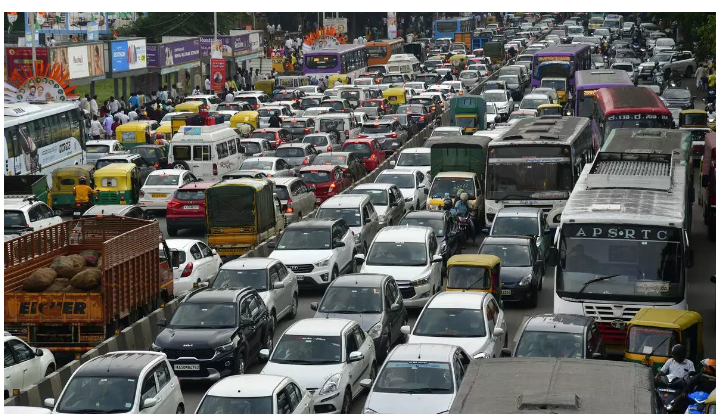
Leo Saldanha in ‘Why Bengaluru Badly Needs a New Governance Approach’h’ published in newly recast Frontline, wishes “de-growth became a guiding light to Bengaluru’s development, helping it transform to sustainability and helping address the massive disparities of development seen across Karnataka”, an article meant to suggest ways for the new Congress Government in Karnataka to ensure the next 5 years is marked with inclusive development addressing needs & aspirations of all constituencies. He argues, “the absence of sufficient open spaces and essential education, health, and social services, combined with weak or non-existent public transport, has made peri-urban Bengaluru an unending ribbon of concretised chaos.”

But in stark contrast, the Karnataka Government reconvened the BBMP Restructuring Committee led by former Chief Secretary B.S. Patil and provided it a larger mandate to reimagine governance and administration not only for BBMP but all related departments and parastatals that have jurisdiction over Bengaluru. This has drawn criticism that the new Government continues to persist with the undemocratic and unconstitutional ways of the old, by sidestepping the constitution of the representative and democratic Metropolitan Planning Committee which is constitutionally mandated to undertake such a task.
Moreover, the Government led by Deputy Chief Minister D. K. Shivakumar invited real estate developers and CEO’s of IT/BT companies to imagine the future of the metropolis. Clearly, this is in stark contrast with its pre-election promise that it would undertake all such tasks adhering to due democratic process and constitutional norms. Instead, it appears to have slipped into the comfort zone of relying on the views of the rich and famous, as was attempted controversially and disastrously before.
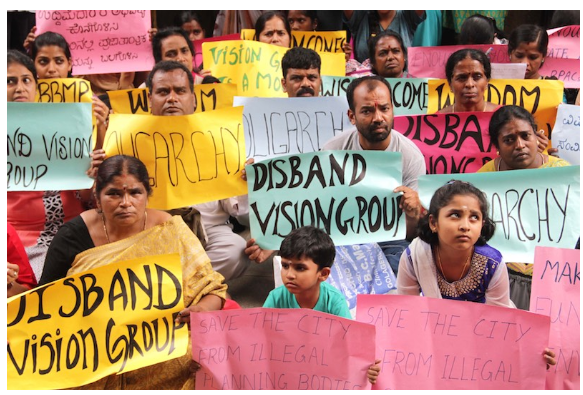
The aspirations of working classes, trade unions, trader and commercial networks, education and health networks, Pourakarmika workers unions, child protection, womens & LGBTQ community, civil society and educational networks, etc. to conceive the futures ground up taking into account everyone’s aspirations, has been sidestepped. The Siddaramaiah-led government must consider the adverse consequence of metropolitisation that once again panders to elitist aspirations ignoring everyone else’s.
Keeping this in view, ESG initiates a public campaign demanding constitution of Constitutionally mandated democratic processes to reimagine and institute governance, administration and people friendly processes to ensure inclusive development of Bengaluru metropolitan area. We invite you to sign the petition here.
Disenfranchisement by Urban Development

Farmers have been protesting the acquisition of about 3034 acres of cultivable land for SIPCOT expansion in Shoolagiri block as an extension of Hosur’s industrial infrastructure landscape. The project will decimate lush mango farms, coconut groves, horticulture crops and poultry, their sole source of livelihood.
The nature of such urbanisation presents unique problems. In Bengaluru, the Bangalore Development Authority has formed several layouts by felling tens of thousands of trees and now has no space for planting the 40,000 saplings that they have undertaken to plant this monsoon.
Reclaiming our Right to Protest
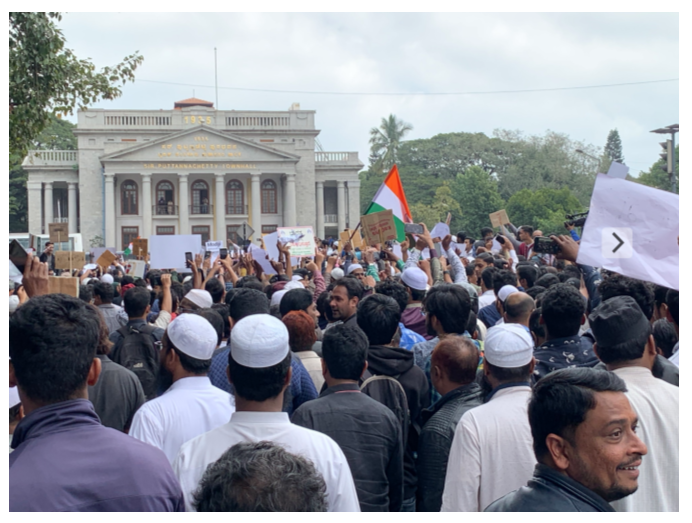
Over the past few years, people of Bengaluru have been forced to protest only in Freedom Park. As a consequence, the publics’ Right to Dissent and Protest has been fundamentally violated and protests invisibilized. The Horatada Hakkigaagi Janandolana, Bengaluru has initiated a petition asking the Chief Minister Siddaramaiah and Home Minister Dr. G. Parameshwara to step forward in safeguarding the deeply democratic right of protest, which they have championed, and send the right signals by withdrawing all cases filed against those who have exercised this right. You can join this movement for deep and functional democracy by signing the petition here!
Read also the extraordinary support extended by the Justice Abhay Oka when he was Chief Justice of Karnataka (now Supreme Court Judge) on the value of such protests and the decision he led in quashing orders by then Bengaluru Police Commissioner Bhaskar Rao to impose Sec 144 across the city to prevent protests against the most controversial Citizenship Amendment Act that discriminates against Muslims here.
Controversial Amendment Against Forest Protection
The Forest (Conversation) Amendment Bill 2023 paves way for easy diversion of forest land for non-forest purposes, and will affect most of the forests along international borders as they can now be diverted and paramilitary forces have power to displace people leading to violation of forest dwellers’ rights. This also paves way for more palm oil mono cultures that will devastate local biodiversity, cultures, and economies.

Equally controversially, the public was given only a mere 15 days to submit their objections / suggestions to the Bill by the, again controversially constituted, Joint Parliamentary Committee. And the text of the Bill was only available in English & Hindi – leaving out almost 75% of the country’s population which does not speak these languages. This propelled a Public Interest Litigation resulting in the Madras High Court ordering the Bill be made available in all vernacular languages. The order stated: “We are of the view that the object behind calling for suggestions would be well met if the Bill is translated and published in the website and suggest. While the endeavour of the respondents in calling for suggestions from the public is laudable, the same could rendered futile if the notification seek.”
But the Supreme Court of India stayed the order stating: “We are prima facie in agreement with Mr. Mehta that the High Court ought not to have interfered in the process in the absence of the respondent-writ petitioner demonstrating a legal right to have publication of the contents of the Bill in Tamil or in any regional language other than Hindi and English.” Mr. Tushar Mehta had offered to translate the Bill only to Tamil, and none of the other Scheduled Languages of India, which grave hurt caused across this linguistically diverse country the Court failed to address.
Efforts to Conserve & Protect Nature

A Bengaluru start-up, Mycellium aims to conserve 10,000 acres of the Western Ghats by 2035 by purchasing private land on the periphery of protected areas to conserve or restore, executing it at the ground level with the help of local communities. Investment will come from a collective of individuals who will have an equity in the company rather than land. Such an idea of creating a for-profit conservation narrative has been questioned by quite a few environmentalists.
Meanwhile in South India the annual census of Nilgiri Thars showed an increase in number in Eravikulam National Park in Kerala, the natural habitat of the critically endangered species. The Assistant Wildlife Warden attributed this increase to the undisturbed habitat and easy food availability along with protection activities undertaken by the Forest Department.
French NGOs and environmental groups turn to legal activism in an attempt to mitigate ecological damage and hold governments accountable. This time five NGOs have alleged that the government is responsible for the sharp decline in insect, bird and other faunal populations, which has been linked to pesticide use and intensive farming by many scientific research papers, as they have not been properly regulated.
Leading scientists in a comment issued in Nature Ecology & Evolution have called for a ‘loss and damage’ fund to be set up to compensate, remedy and rehabilitate habitat loss through which developed countries can pay to poorer nations whose resources are lost due to overexploitation.

Conservation Backfired
A controversial attempt to reintroduce cheetahs into the wild in India has suffered a major setback after three adults and three cubs introduced from Namibia have died over the past eight months. While project scientists insist that several fatalities were to be expected at the start and death toll slowly stabilising in the near future, conservationists have said that there is a lack of space for cheetahs to thrive and that the project was set up hastily under pressure from Prime Minister Narendra Modi resulting in such devastating consequences.
Georgia’s former Prime Minister Bidzina Ivanishvili has built a dendrological park, home to numerous species of giant trees and exotic birds from around the world. Several living baobab trees in Kenya’s Kilifi region have been uprooted for export to this park, which has led to accusations of biopiracy as there is a breach of the Convention on Biodiversity (CBD) and the Nagoya Protocol.
Targeting Human Rights and Environmental Defenders
While India commits to phasing out fossil fuels, its actions appear to speak otherwise. The government has raided three NGOs who have criticised coal and are fighting against Adani’s coal project in Hasdeo Arand on grounds they cause massive destruction of local biodiversity.
In 2018, while Indian Prime Minister Narendra Modi was recognized by the United Nations as a “Champion of the Earth” for his promotion of solar energy, the UN’s own reports simultaneously document the government’s targeting of environmental activists. According to the Indian government’s own figures, it has curtailed the operations of more than 19,000 NGOs since 2014, including well-known environmental and human rights groups.
Waste and Solar Parks’ Ecological Mess
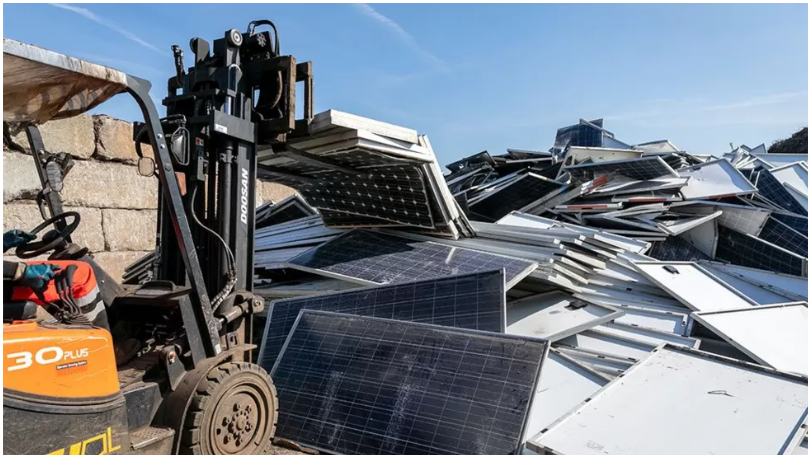
With the first generation of photovoltaic solar panels reaching expiry soon, the panels are an eco-disaster waiting to happen if a mechanism for their disposal is not devised immediately. A factory in France run by ROSI is the world’s first factory dedicated to fully recycling solar panels. They hope to be able to reuse 99% of the components of the panels.
One of the false solutions to waste management and landfills heralded by the Indian government is the setting up of waste to energy plants. However, a Strength, Weakness, Opportunity and Threat (SWOT) analysis conducted by the Centre for Financial Accountability reveals how WTE Plants are not economically and environmentally viable.
The real solution to the garbage problem has always been the lack of decentralisation of management of waste focused on segregation at source. And Chhattisgarh is attempting to do just that. In Ambikapur, the city has created its own decentralised waste management plan that not only minimises waste that reaches a landfill site, but also generates revenue for the local municipal corporation that supports several jobs.
In Bengaluru, however, the system still remains in a sad state with waste workers suffering from unpaid dues. The BBMP is yet to pay an astonishing sum of Rs 9,41,03,212 to dry waste collection centres across 46 wards of the city.
Protecting Indigenous people, land & knowledge
Indigenous peoples are increasingly, and rather unintelligently so late in the day, recognised as the most effective custodians and conservationists of the world’s resources given their deep connection with nature. The survival of four children of the Huitoto Indigenous tribe for 40 days after their plane crashed in the Amazon is a testament to the depth of indigenous knowledge and their relationship with the natural environment which is taught starting in the mother’s womb.
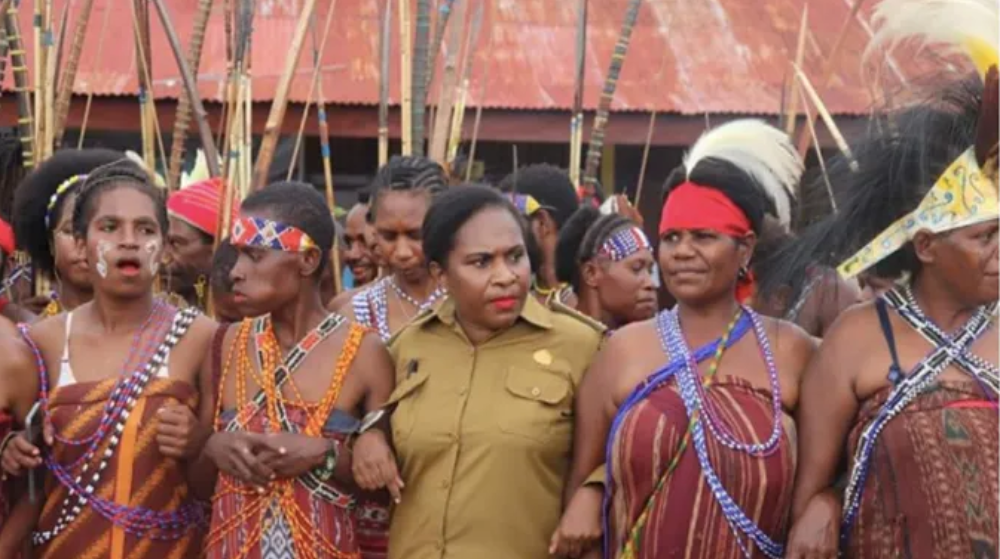
Recognising the importance of indigenous people in protecting the forests, in 2016 Indonesia began legally recognising Indigenous “customary forests” in order to bolster land tenure rights and better manage natural resources. In October, the Ogoney became the first Indigenous people in West Papua province to have a customary forest recognised by the government, where parts of the forest is set aside for sustainable use of natural resources and the remaining which is considered sacred is fiercely protected.
On the other hand, Brazil’s Lower House of Congress approved a bill that restricts the legal recognition of Indigenous territories throughout the country, reduces the area of Indigenous lands and opens Indigenous areas to mining and infrastructure projects, among other changes.
Indigenous people & their knowledge are often exploited easily as is the case with Tibet’s nomadic yak-herders who once had access to Tibet’s pristine water and grazing lands for free. Now, they are made to buy water that Chinese entrepreneurs are bottling by tapping into Tibet’s abundant groundwater and spring water. All this is in contravention of the rights of nature and the local people, various international covenants and clearly in contravention of Convention on Biological Diversity. Does this not make China’s extraction a case of biopiracy?
Persistent Plastics
While nations are beginning to prepare a zero draft for a global plastic treaty, the problem of plastic pollution persists with local communities facing the brunt of it. In Bengaluru, although single use plastics were banned in 2016 when several plastic items were banned nation-wide, implementation remains a big issue. A recent study reveals that about 1.2 billion microplastic pieces are transported into the Arabian Sea from the Netravati river on a daily basis which is slightly lower than the approximate 1.3 billion microplastic pieces released daily by the Ganges into the Bay of Bengal.
Wetlands in trouble

A research paper titled ‘Assessment of Fisheries and Management: Insights from Dal Lake, Kashmir’ has drawn a grim picture of the Dal Lake, a major attraction for tourists visiting Kashmir and a key water body for fish in Kashmir. Pollution has affected the total fish production and destroyed the breeding grounds of the native fish, with severe impacts observed since 2007-08.
Another threat to the lake’s ecosystem, the fish population as well as the local livelihoods, is the odd appearance of an alien fish species, Alligator Gar (Atractosteus spatula), which is native to North America. Dal Lake and other large freshwater lakes in Jammu & Kashmir have been shrinking in recent years due to land conversion & urban development..

Bengaluru lakes under the Karnataka Forest Department (KFD) are staring at a bleak future as the department is facing a funds crunch. As a result, Nagavara lake may be transferred back to the BBMP for its maintenance. The Veerasandra lake adopted by BMRCL in 2012 is shaping up into a functional aquatic ecosystem after a restoration project sponsored by Titan who undertook the task as part of its CSR work in 2021. But lakes in Bengaluru are far from risk as BBMP suspended two engineers for facilitating the construction of a road right through the Hosakerehalli lake by dumping several truckloads of soil into the 57-acre waterbody, and that on instructions of the Bangalore Development Minister D K Shivakumar.

In the meantime, Chennai Metropolitan Development Authority is planning to spend Rs. 100 crores on a lake-front development project which envisages walkways, cycle tracks, butterfly parks, amphitheatres, miyawaki forests and entertainment facilities around 10 lakes of the city. This model of ‘lake development’ has been systematically analysed by ESG as destructive of freshwater ecosystems, a view upheld by the Justice N K Patil Committee. That it continues to be persisted nation-wide is deeply worrying.
Meanwhile, the Buckingham Canal which came into existence 217 years ago and served as an important waterway between Pedda Ganjam in Andhra Pradesh to Marakkanam in Tamil Nadu till the early 20th Century, is witnessing major deterioration due to lack of maintenance and also becoming a point for sewage networks to drain into.
Such destruction of wetlands is translating quickly into lack of drinking water, as the suffering of residents of Ramagondanahalli, Siddapura, and Thubarahalli villages who do not receive piped water supply indicate. They are shelling out nearly Rs. 10,000 per month for water and the Karnataka Lokayukta troubled by this situation has registered a Suo Motu case to investigate their water crisis.

Renew-able?
Deputy Chief Minister of Karnataka has expressed the government’s willingness to expand the solar power park at Pavagada in Tumkur district, the biggest solar park in Asia, if the landowners in the region voluntarily provide their lands. ESG has studied the Pavagada Solar Park and highlighted the humanitarian & environmental cost at which the park is set up. Furthermore, experts now worry that India’s push towards renewable energy may lead to food insecurity in the future as the country would need at least 400,000 hectares of land by 2030 to achieve its renewable goals. Bhargavi Rao of ESG is cited in an article stating: “The pandemic has shown us that agriculture is the only way to survive, at least in India. Given this, we should be nurturing agriculture, not taking away from it.”
Loss of Blue-Green Commons
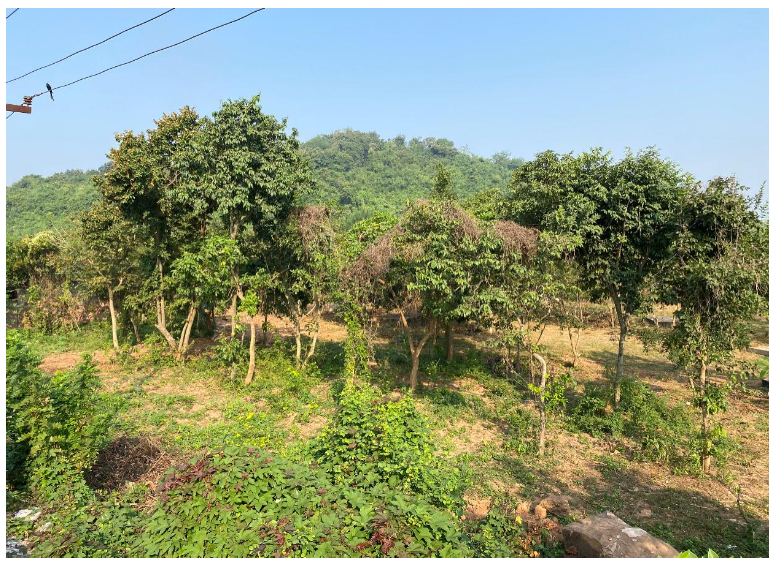
About 203 trees have been permitted to be cut along the Dooravani Nagar Gate- Kempapura Cross for construction of elevated structures (viaduct and station) as part of the airport Metro line. The objection of the petitioner to the miyawaki method (formation of tiny forests) as part of compensatory afforestation programme was rejected by a division bench headed by Chief Justice B Varale while the BMRCL stated that it was the only alternative due to the lack of open spaces near the project area. this when across Karnataka, forest area of over 3000 acres has been diverted to set up tree parks with another 305 acres of Jarakabande Kaval set to join the list to make way for the Atal Bihari Vajpayee Botanical Garden.
The hillocks of Sikharchandi, which acts as one of the green lungs for the ever-expanding city of Bhubaneswar, has been stripped of trees spreading over 212.5 acres for a water supply project for a northern suburb, leading to opposition by residents of 15 villages for whom the forest and hillocks have religious significance.
The Central Empowered Committee (CEC) of the Supreme Court has recommended approval of the construction of underground twin tunnels beneath the southern ridge in Delhi, which is an extension of the Aravallis, parts of which have been notified as a reserved forest. NHAI has proposed using a tunnel boring machine stating that it will “most likely” not damage the area over the ground.
The Environment Ministry has clarified that mining activity can continue in the part of the forest land granted clearance by the Centre even if there is no clearance for the remaining forest land involved in the lease area. This could present a fait accompli as the mining company would hope to mine in the entire lease area, according to environmentalists and legal experts.
Environment Support Group (Trust)
1572, 36th Cross, Ring Road, Banashankari II Stage
Bangalore 560070. INDIA
Tel: 91-80-26713560 | Voice/Fax: 91-80-26713316
Website: esgindia.org Email: [email protected]
Follow our Facebook, Instagram, Linkedin and Twitter page
- ESG is registered to secure support under the Corporate Social Responsibility (CSR) scheme of the Ministry of Corporate Affairs. Reg No. – CSR00017320
- Environment Support Group (ESG) is eligible to receive foreign donations/grants per the Foreign Contribution Regulation Act (FCRA)
- All donations to ESG from Indians are eligible for tax exemptions as per Sec. 80G of the Income Tax Act.
More details about ESG’s Financial Reports and Statutory Approvals are accessible here: https://esgindia.org/new/financials-and-statutory-clearances/
Your Monetary Contributions Keep Us Working

Donate via UPI (This QR Code is applicable ONLY to Indian/Domestic donors. Post UPI payment, please share donation details to [email protected] along with PAN – statutory requirement.)

